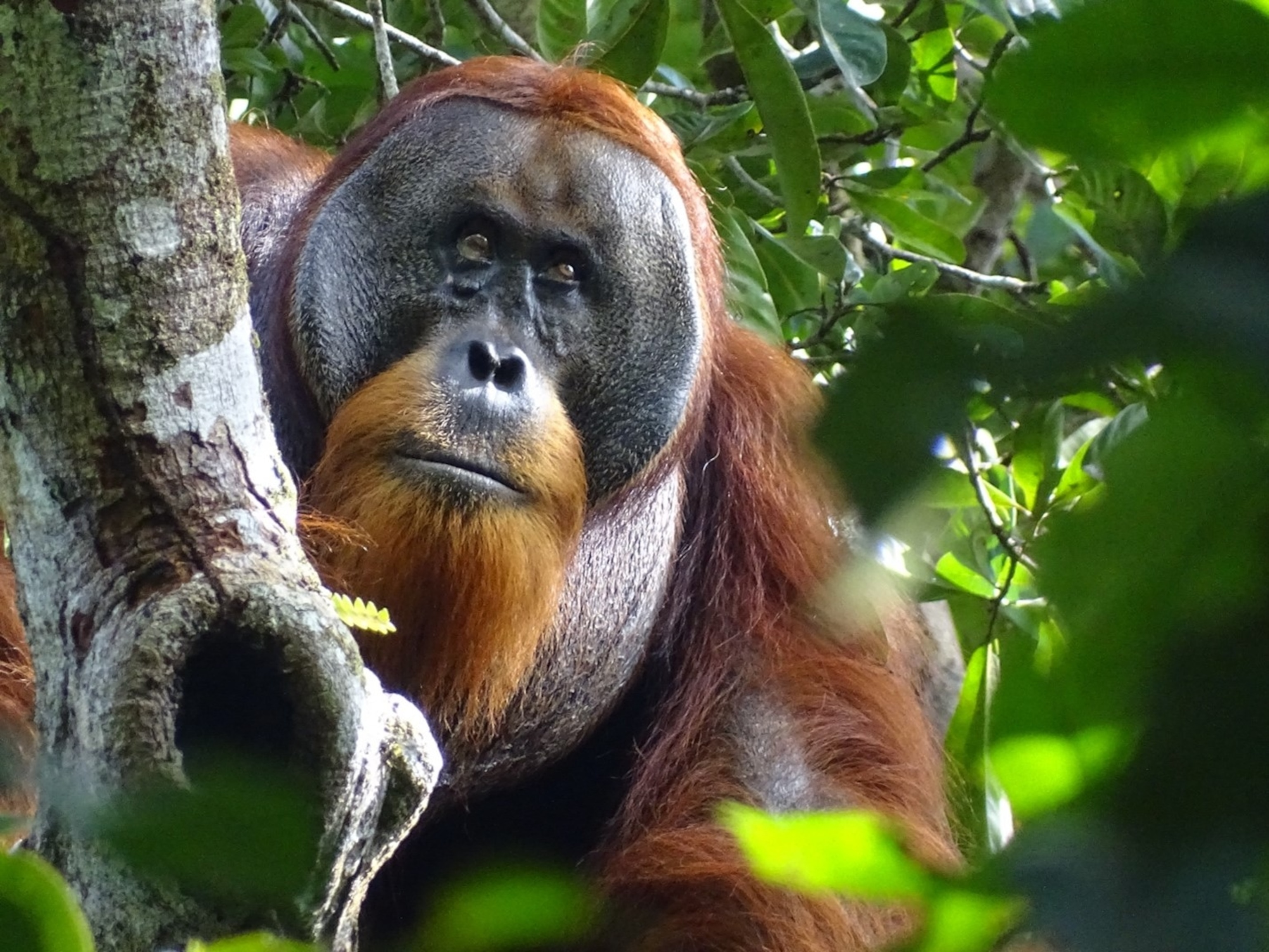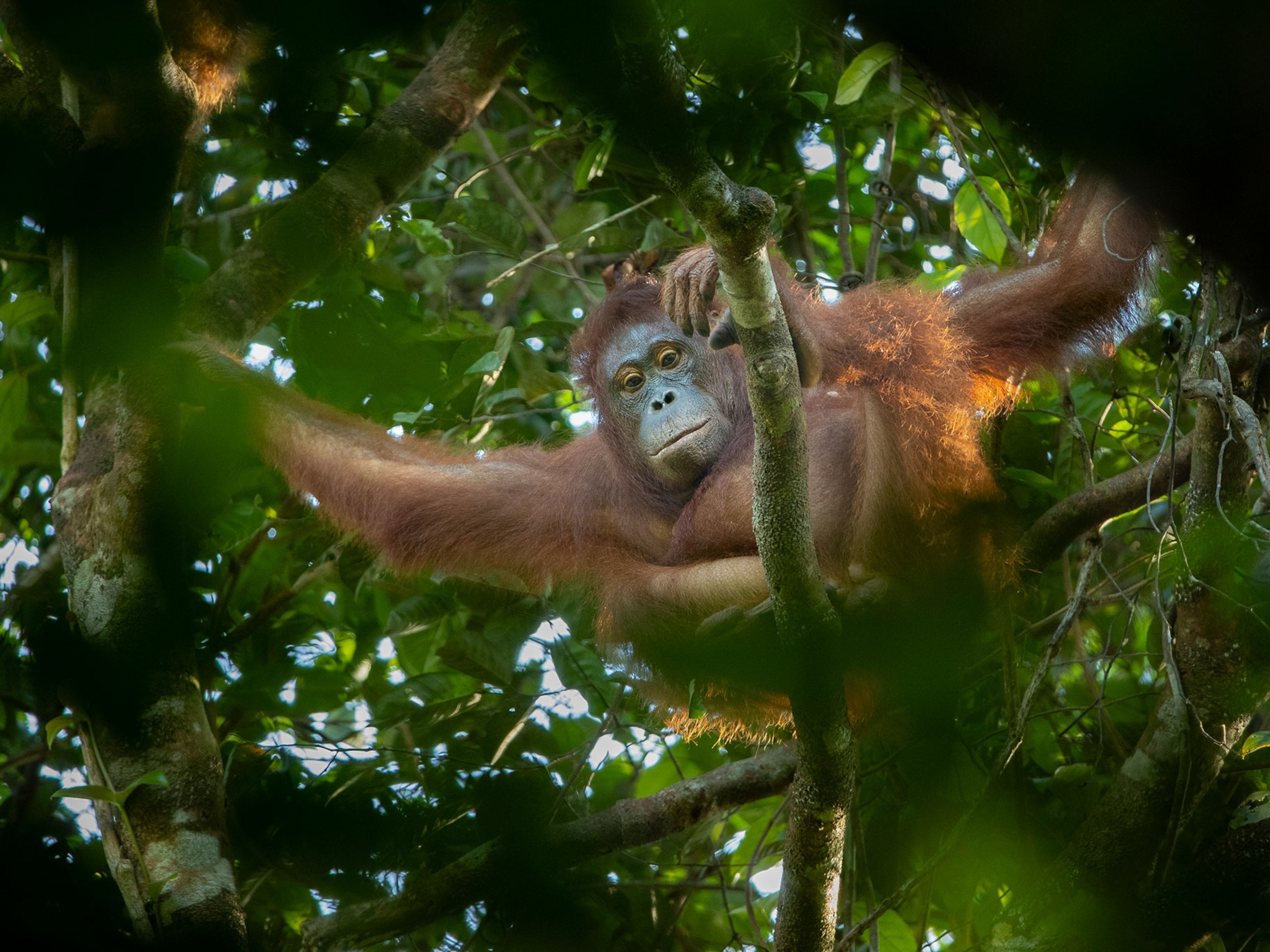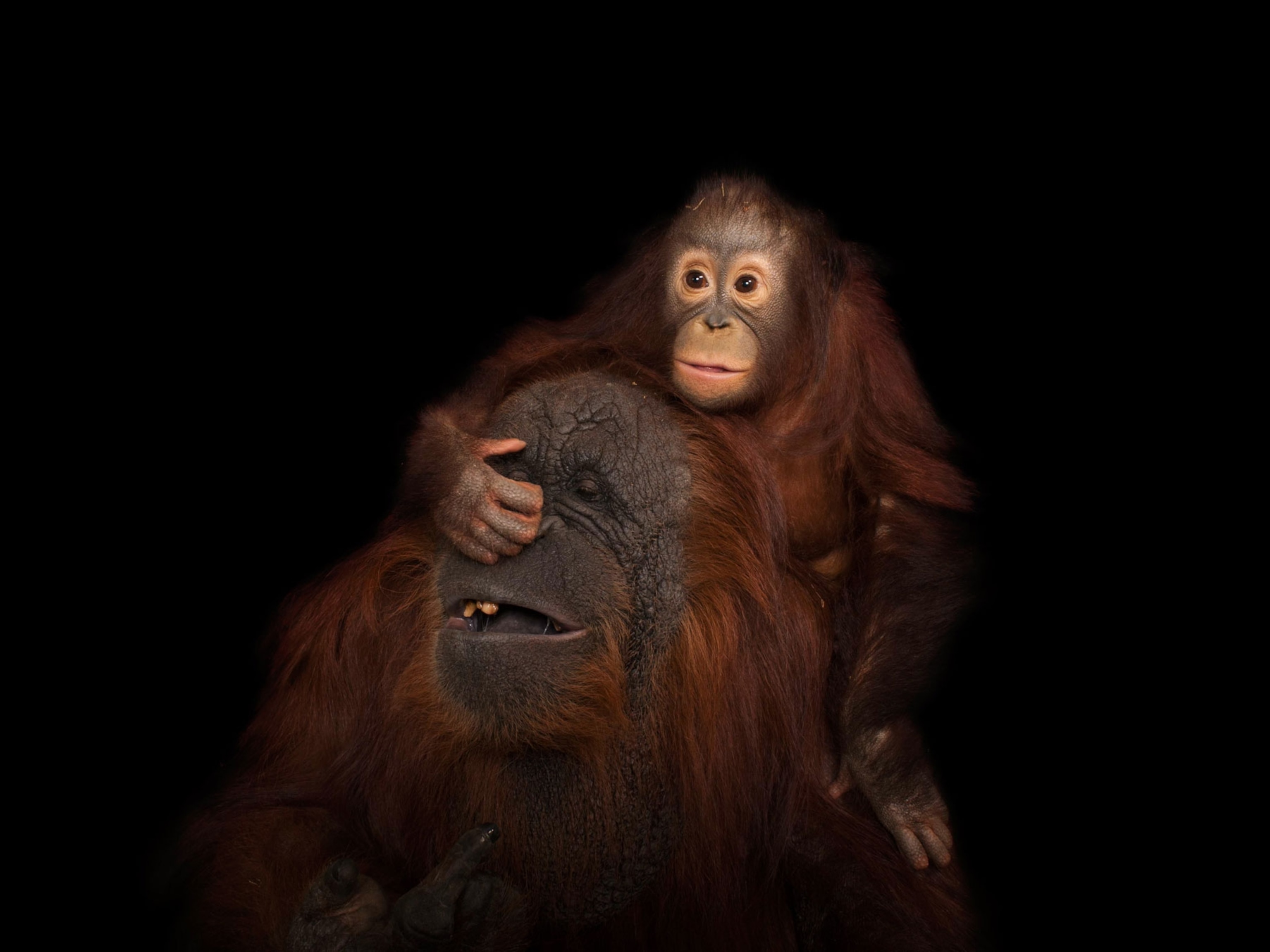Orangutans Nurse For a Record-Breaking Amount of Time
The Southeast Asian apes suckle for longer than any other primate on Earth, a new study says.
The world's largest tree climbers, orangutans now have another superlative to their name: They nurse their young longer than any other primate, a new study says.
Surprising new research has revealed that the colorful great apes suckle for up to eight years, and in some cases longer.
Little is known about when the shaggy great apes wean in the wild, in part because they're so challenging to study—they spend most of their time aloft and out of sight. But knowing when juveniles strike out on their own is important for conservationists working to save them. (See "Orangutans Are More Like Us Than You Think.")
For the new research, Tanya Smith and colleagues developed a creative method for tracking how long orangutans nurse: Analyzing the levels of barium, a trace element, in young orangutans' teeth. Because barium absorbs into young orangutans' skeletons from their mother's milk, it can reveal how long an orangutan had been nursing.

“This paper represents an exciting new method of determining weaning age from the teeth of wild primates,” says biological anthropologist Cheryl Knott, director of the Gunung Palang Orangutan Project in Indonesia's Gunung Palung National Park.
Teeth Tell the Tale
Two species of orangutan—whose name comes from the Malay word for "person of the forest"—swing from the trees in Sumatra and Borneo: The Sumatran orangutan, Pongo abelii, and the Bornean orangutan, Pongo pygmaeus. (Also see "Pictures: Saving Sumatra's Orangutans.")
Smith, a biological anthropologist at Griffith University, and team studied the teeth of four immature orangutans, two from Borneo and two from Sumatra. The animals had been shot during collecting expeditions many years ago, their bones then housed in museums.
By studying growth patterns and barium levels in the specimens' molars, the team determined the animals' barium levels decreased after one year of age, but that the element was still there nearly a decade later, according to the study, published this week in Science Advances.
For instance, one Bornean orangutan weaned at 8.1 years of age, and a Sumatran orangutan was still suckling at the staggering age of 8.8 years old when it died. Orangutans have their first offspring around 15 years of age and are believed to live up to 50 years in the wild. (See "10 of Our Favorite Orangutan Pictures.")
Tough Times
The teeth also showed cyclical periods of high and low barium concentrations that corresponded with fruit abundance: When fruit was plentiful, barium levels were lower.
That suggests that in times of scarcity, young orangutans may "fall back" on mom's milk to get them through, says Smith.
“In the wild, it's difficult to know how much milk the juveniles are actually ingesting, and this new study indicates that they are still obtaining substantial milk during this period," adds Knott. (Read more about Knott's work on orangutans in her own words.)
The unpredictable environment is also likely why orangutans mature more slowly—there's rarely a surplus of food that could fuel rapid growth. Indeed, if the fruit supply were more reliable, it's likely orangutans would not nurse so long, she says.
Captive primates tend to mature more quickly than their wild counterparts, for instance, presumably because they eat consistently and nutritiously, Smith notes.
Steady Decline
Since they reproduce so slowly, orangutans are particularly vulnerable; deforestation for palm oil plantations has dwindled their numbers, and they are now critically endangered. (Read "Schoolkids Write Adorable Book About Orphaned Orangutan.")
The island of Borneo (map) has lost more than 50 percent of their orangutan population in the past 60 years, and in the past 20 years the species' habitat has decreased by at least 55 percent. On Sumatra (map), just under 15,000 remain, according to WWF. That's a drop from possibly 230,000 of the primates a century ago.
Smith and colleagues' study suggests there need to be more research into orangutan moms and babies, Knott adds. (See "6 Fierce Animal Moms That Go to Extremes For Their Young.")





